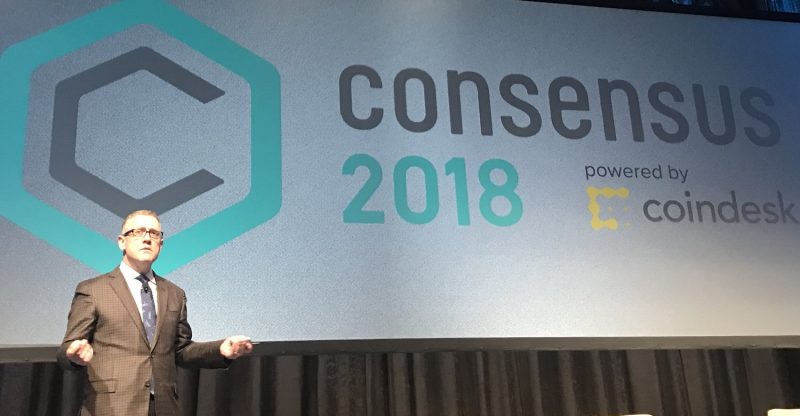St. Louis Fed President Say ‘Cryptocurrency Competition Is Nothing New’
President of the St. Louis Federal Reserve Bank, James Bullard, stated on Monday that cryptocurrencies “are creating drift a non-uniform currency in the U.S.”
Speaking at the Coindesk’s Consensus 2018 program, Bullard made talks on the history and economics of private currencies, drawing on his work in this area. He went on explaining to the audience that public and private currencies can “coexist in equilibrium” and even “facilitate transactions that might not otherwise occur.”
He added saying that history always shows that currency competition often causes more problems than it solves. According to him, way back in the 1930s, 90 percent of the currency in circulation was privately issued, with the uniform “greenback” only coming into use during the Civil War.
“You would have Bank of America banknotes, Wells Fargo banknotes, but they all traded at a discount.” He said.
“Currencies have to be reliable and hold their value,” using the hyperinflammatory Venezuelan bolivar as an example.
As for whether cryptocurrencies “might be able to protect us from the vagaries of Venezuelan monetary policy,” Bullard pointed to a few issues.
The first thing is any transactions using these currencies might be illegal.
“Bitcoin, for example, has a fixed supply of 21 million bitcoin, but ‘the system can still bifurcate, creating two fixed volumes of coins.”
Bitcoin, for example, has a fixed supply of 21 million bitcoin, but “the system can still bifurcate, creating two fixed volumes of coins.” In Bullard’s opinion, problems with monetary policy are “not mitigated by commodity-based money nor by cryptocurrencies.”
Bullard’s remarks were followed by Diane Brady, journalist, and founder of dbOmnimedia, for a fireside chat. Brady, later on, asked him if government control was the only way to guarantee a stable monetary system, he said:
“This century, the past century it’s been true. Will it always be that way? I don’t know. Maybe there are technological solutions.”
He concluded by saying:
“The drift to a non-uniform currency could become a serious issue for the U.S. if cryptocurrency reaches a large volume of trade.”





